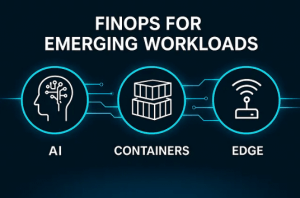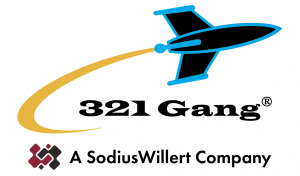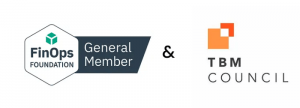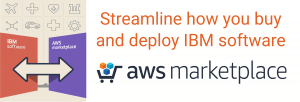FinOps for Emerging Workloads: How FinOps Tools Prepare You for AI, Containers & Edges

Why the next frontier of cloud spend needs visibility, automation and governance — today.
The cloud world has typically been defined by server-instances, storage buckets and VM counts. But the next wave of workloads is different: AI model training, containerized microservices, and edge infrastructure pushing compute out to devices. These emerging workloads bring new cost models, new operational patterns and new financial risk.
For FinOps practitioners, that means the old playbook isn’t enough. It’s no longer just about rightsizing VMs or negotiating discounts. It’s about managing GPU rails, container churn, edge device fleets and data-supply chain costs — all while delivering business value.
What many organizations are discovering is that modern FinOps tools (like those from IBM) are evolving to meet these challenges. In this article we’ll explore how to prepare your FinOps practice for AI, containers and edge, and how you can turn risk into opportunity.
1. The New Workload Landscape: AI, Containers & Edge
Artificial Intelligence
AI workloads are unique. Training large-scale models or running inference at scale introduces high cost variability and new cost dimensions: GPU hours, memory, token usage, bandwidth, storage durability. For example, analysts forecast that infrastructure outlays for AI will surpass $570 billion by 2026. (AICERTs — Empower with AI Certifications)
FinOps for AI demands more than cost dashboards — you need token-level visibility, GPU utilization metrics and governance before the spend happens. (FinOps Foundation)
Containers & Kubernetes
Containers add agility — but also potential cost noise. Micro-services spin up, drift, duplicate, and often get forgotten. Without proper tooling, you risk paying for idle pods, over-provisioned clusters or unmanaged cloud credits. The good news: FinOps tools now include container-specific cost insights, enabling rightsizing, anomaly detection and unit-economics views. (Apptio)
Edge & Distributed Compute
Edge workloads shift compute to devices and remote locations. That changes the cost equation: data egress, device provisioning, remote telemetry, unpredictable connectivity. FinOps teams must track costs across devices, networks and cloud back-ends. Many enterprises are revisiting their “cloud-first” assumptions because AI and edge workloads are driving cost pressure back to on-prem or hybrid models. (Computer Weekly)
2. Why Traditional FinOps Isn’t Enough
When cost models were simpler, FinOps focused on tagging, rightsizing, discount programs and basic dashboards. But with emerging workloads:
- Cost units change (token, GPU-hour vs VM-hour)
- Performance and value are tightly correlated (the cheapest latency may hamper function)
- Spend can explode fast (training loops, container sprawl, edge devices)
- Data flows and operational complexity increase — making “invisible costs” (e.g., data ingress/egress, shadow services) very real.
Without evolving your practice you risk: surprise invoices, slow feedback loops, inability to attribute value to spend, and governance gaps that expose you to waste or risk.
How Modern FinOps Tools Address the Challenge
Here’s how next-gen tools from IBM (and others) are stepping up.
Visibility and Unit Economics
IBM Cloudability, for example, is positioned for “multi-cloud, cloud application, AI & container cost visibility.” This means you can track not just “bill by service” but cost per token, cost per container, cost per edge device.
Performance-Safe Automation
IBM Turbonomic can automate resource decisions to balance performance and cost — especially important when running performance-sensitive workloads at the edge or in AI training rigs.
Governance for New Workload Patterns
IBM Apptio’s recent updates (Cloudability Governance, Kubecost 3.0) embed cost estimation and compliance checks into infrastructure-as-code workflows — very useful when workloads scale quickly or infrastructure is fluid. (SiliconANGLE)
Data & Observability Integration
To truly manage emerging workloads you need to associate cost spikes with real operational anomalies. IBM’s data-observability story helps tie compute/flow anomalies to cost impact. (IBM)
Practical Steps to Prepare Your FinOps Practice
- Expand your cost-unit definitions
Move beyond VM-hour. Capture GPU-hour, token-count, container-pod, device-metric. - Implement tagging and metadata for new workload types
Tag training jobs, container groups, edge device clusters so you can allocate cost and usage accurately. - Embed cost checks earlier in the lifecycle
Use workload-deployment pipelines to flag high-cost configurations (containers with excessive memory, training jobs without budget controls). - Align performance and cost objectives
Make sure engineering, DevOps and FinOps teams agree on performance criteria — yes you save cost, but you must meet performance SLAs. - Adopt automation and anomaly detection
Use tools that detect drift, idle containers, or runaway jobs. Automate rightsizing and shut-down for unused capacity. - Extend FinOps governance to edge/distributed compute
Create visibility into device fleets, remote sites, data transfer costs and cloud-edge interplay. - Monitor outcomes and tie back to business value
Track “cost per model inference,” “cost per edge transaction,” or “container cost per user session.” Use those metrics to justify deploy-decisions.
The Business Case: Why This Matters
Emerging workloads aren’t academic — they’re becoming business critical.
If you fail to adapt:
- You may see runaway cloud spend with little visibility.
- You risk performance bottlenecks tied to cost optimisations gone wrong.
- You may miss competitive advantage because cost constraints slow innovation.
But if you get this right, your FinOps practice becomes a strategic enabler:
- Financing AI experiments without fear of cost rebellions.
- Running container platforms efficiently and sustainably.
- Turning edge compute into a value driver instead of a cost sink.
In short: emerging workloads raise the stakes for FinOps — and the tools exist to help you meet them.
Conclusion
Emerging workloads — AI, containers, and edge — are rewriting the rules of FinOps. Your cost model, governance approach and automation strategy need to evolve accordingly. Technology investment in this space is not about reducing spend; it’s about doing more with the same spend. With modern FinOps tools, you can monitor, analyze and control cost where new workloads live.
Reach out to our team to learn how we can help you optimize costs and prepare your FinOps strategy for emerging workloads.
📩 info@321gang.com
🌐 321gang.com/ibm-finops-solutions
At 321 Gang, we are committed to helping organizations navigate the evolving intersection of cloud, finance, and emerging technologies. As active members of both the FinOps Foundation and the Technology Business Management (TBM) Council, we stay engaged with the latest frameworks and community-driven practices for cost optimization and value realization. These memberships provide us with practical insights and peer collaboration that enhance our ability to support organizations facing the unique financial challenges introduced by AI and cloud-native architectures. info@321gang.com


321 Gang | 14362 North FLW | Suite 1000 | Scottsdale, AZ 85260 | 877.820.0888

